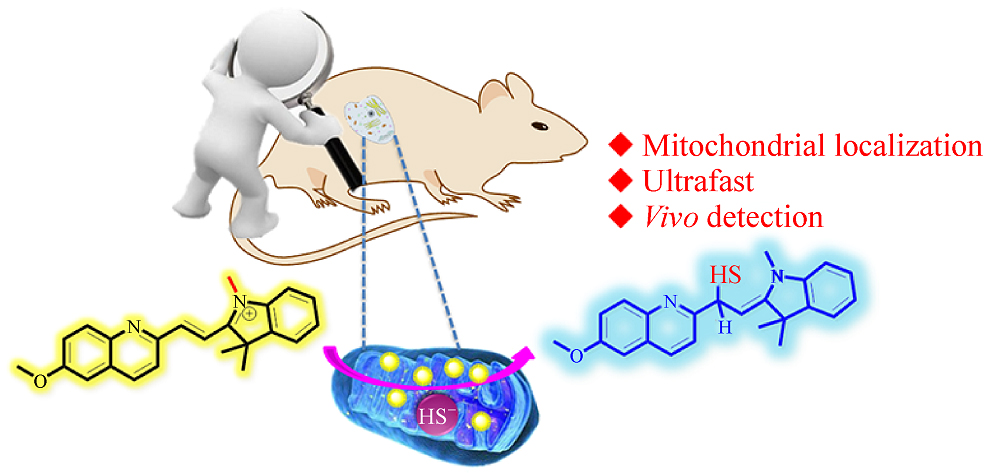1 Introduction
2 Experimental
2.1 The preparation and characterization of Probe 1
2.2 Imaging experiments and general measurements
3 Results and discussion
3.1 Fluorescence and ultraviolet-visible (UV-vis) spectra

Fig.2 UV-vis (a) and fluorescent spectra (b) change of the 10 μmol/L Probe 1 and an 80 μmol/L HS− in a PBS buffer (20% DMSO, V/V, pH= 7.4); (c) fluorescent titration change of the 10 μmol/L Probe 1 upon addition of H2S (0–80 μmol/L); (d) linear relationship between the fluorescence intensity ratios (F470/F572) and HS– (10–80 μmol/L, where λex = 400 nm). The inset image shows the color changes under visible light (red: probe, black: probe+ NaHS). |
3.2 The selectivity and competitive response of Probe 1 to H2S
3.3 Kinetic study in the detection process of H2S
3.4 Reaction mechanism of Probe 1 for detecting H2S
3.5 CLSM experiments of Probe 1 in cells

Fig.6 (a, b, c) CLSM images of 10 μmol/L Probe 1-loaded HeLa cells incubated with HS– (20 mmol/L and 80 μmol/L, 30 min); (d, c) CLSM images of 10 μmol/L Probe 1-loaded HeLa cells incubated with SNP (100 μmol/L, 30 min); (f) CLSM images of 10 μmol/L Probe 1-loaded HeLa cells incubated with 1 μmol/L MTR at 37 °C for 20 min, where λex = 400 nm, λem = 580 ± 30 nm and the scale bar= 10 μm. |








